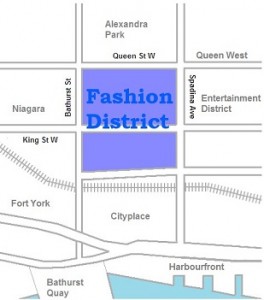
A city with a lot of people means different fashion. Toronto’s fashion industry is one of the City’s largest industrial employers. The city is home to over 500 apparel manufactures. In one year the wholesale shipments reaches near 1.5 billion. This means 16% of the 9 billion Canadian market. Forty-eight of the world’s least developed countries have imports in the Canadian trade legislation which permits duty- and tariff free apparel. The fashion retial stores in Toronto which are over 4,600 make 2.6 billion a year. Some of the designer lines that started in Toronto are Lida Baday, Brian Bailey, Joeffer Caoc, David Dixon, Arthur Mendonca, Franco Mirabelli, Sunny Choi and Pink Tartan. About 50,000 people are employed in the fashion industry more than half in manufacturing. Many of the US and Canadian companies depend on Toronto contractors as well as home workers for quality garments, flexibility and reliable services. Many universities and colleges offer fashion programs which makes Toronto a learning centre for the fashion industry. Makeup artists, hairstylists, cutters, sewers and art directors are part of the workforce included in the fashion industry. Toronto has Global model agencies that have their offices such as Elite, Ford, and Giovanni. Some of the major manufacturers in Toronto include Ganier Lether, Dominion Hosiery, Macmor, McGregor, Phantom, Vikeda, Weston Apparel AND Wing Son Garments. Some of the major retailers in Toronto include Bata, Harry Rosen, Hold Renfrew, Hudson’s Bay Company, Roots and Reitmans. Some of the major fashion media in Toronto include Citytv’s Fashion Television and Fashion Television Channel: CBC’s Fashion File; magazines- Elle Canada, Flare and The Look, Fashion and Fashion Quarterly. Lida Baday, Franco Mirabelli and Brain Bailey are alongside some of the words top lines such as Bergdorf-Goodman, Saks Fifth Avenue and Jacobson’s Nordstrom. In Toronto manufacturing and competitiveness are always improving through new technologies and work methods. The industry also supports many fashion shows.
For example L’Oreal Toronto Fashion Week is a event that happens twice-yearly where collections of ready-to-wear by Canadian designers is presented to the world as well as international media and buyers. FILC which is Fashion Industry Liaison Committee was created in recognizing the importance of Toronto’s fashion industry. The committee provides valuable information on key issues around the fashion industry to City Council.
The Toronto Fashion industry has grown and is still growing. Many other countries use models that the Toronto Fashion industry uses to make their own industry grow. With many styles and designers coming our way, the fashion industry in Toronto will be one of the world’s leading fashion industries in the future.
![Reblog this post [with Zemanta]](http://img.zemanta.com/reblog_e.png?x-id=e2cc18dc-ad2a-4782-ab6b-5aacdf0a6120)











